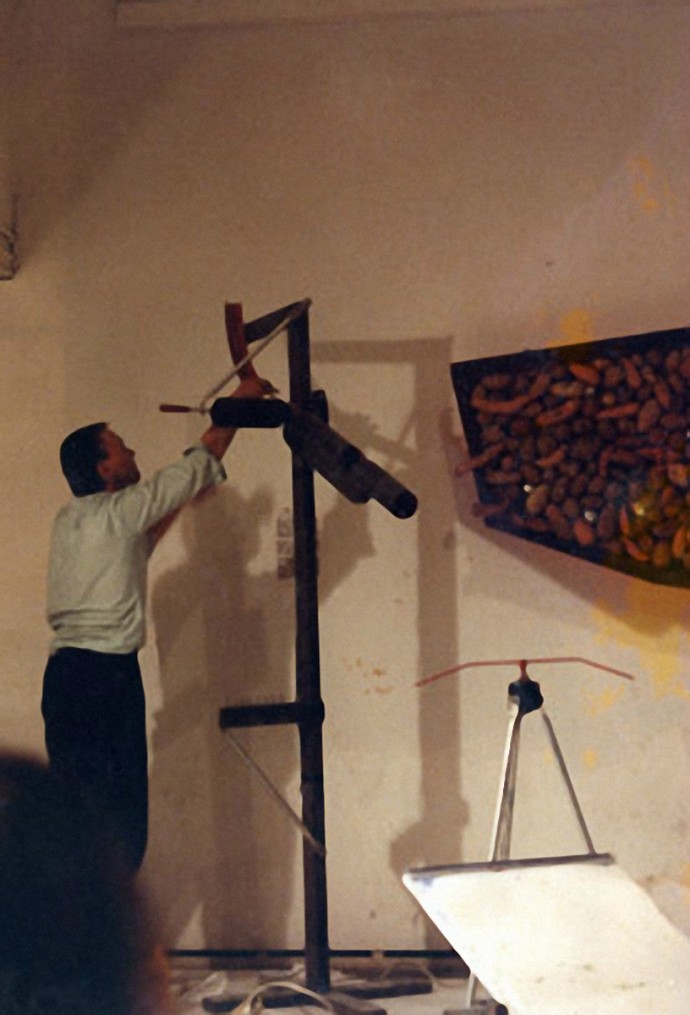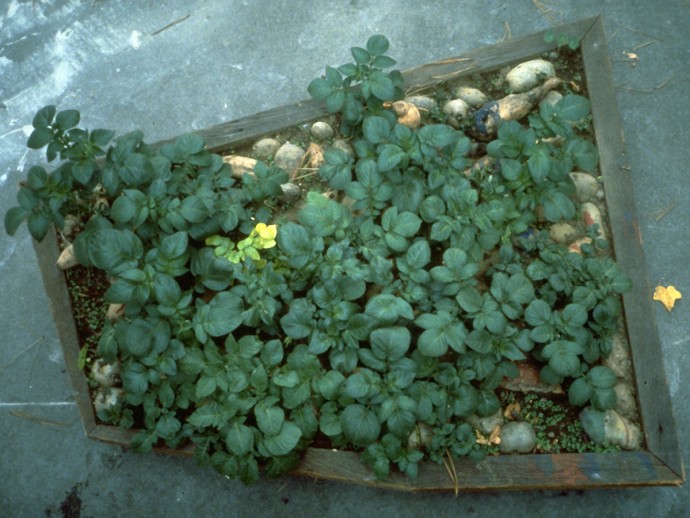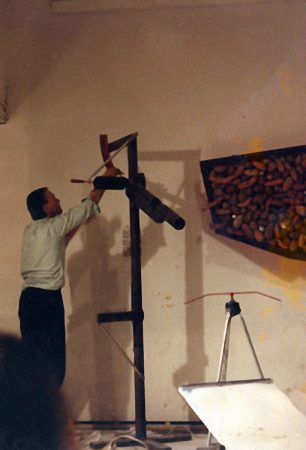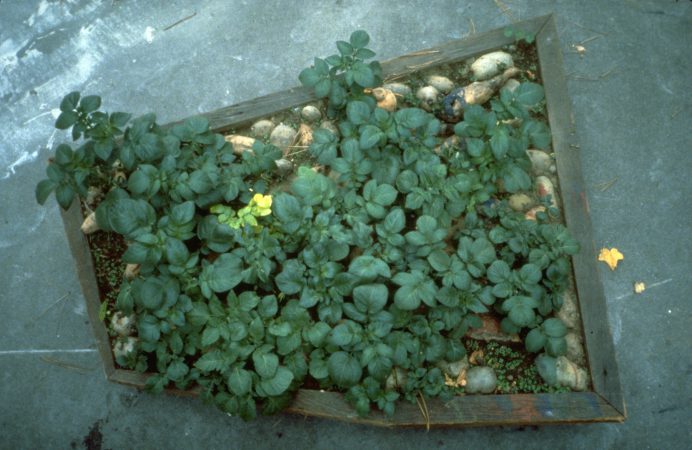A living systems bio-art painting.
I Yam What I Yam 1988 was constructed of potatoes, yams, dirt, and eggs filled with tempera paint.
This living system’s work involves interaction and participation and then growth/evolution afterward through interaction with a natural environment as sun and water enters the system and fits into the category of interspecies artworks.
It was also meant to subvert the notion of the “precious” art object and further introduce chance operations into the work in the spirit of John Cage.
During the opening, people were given stones to throw at the painting (right side of the image below), thus exposing the bed of yams and potatoes to the paint injected into each egg.

During the opening, I was utterly overwhelmed by how exuberant people were. Individuals ran up and took bites out of the potatoes and yams, while others smeared tempera paint on the frame.
Seeing “passive viewers” transformed into active and emotionally invested participants was eye-opening and set me down the path of questioning human/art/life interfaces and wanting more interaction.

The living painting I Yam what I Yam continued to transform as it was moved outside, receiving rain and the sun. Soon potato and yam leaves and buds bloomed.
Hungry California slugs occupied and ate much of the work, and insects laid their eyes within. They loved it until it was eaten.
This was, in many ways, a breakout work for me as it broke so many “fine art rules” of the day.
While it was an epiphany to create an interactive living-systems painting, critical reflection also suggested a form of interaction that was more rapid, evocative, and evolutive, and one that might involve the viewer much more.
It was also the beginning of a Bio arts practice that continues to this day.
EXHIBITIONS
SAN FRANCISCO STATE UNIVERSITY, San Francisco California, 1988
ATA Gallery San Francisco, California 1988
KEYWORDS
living systems artwork, bio-art, interactive art, participatory art

